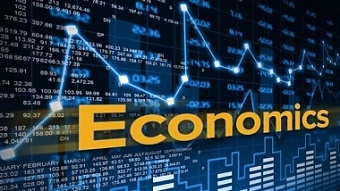Analytics, Economics, Estonia, EU – Baltic States, GDP, Markets and Companies
International Internet Magazine. Baltic States news & analytics
Friday, 26.04.2024, 23:03
Estonia's GDP to shrink 7% in 2020
 Print version
Print version |
|---|
Swedbank chief economist Tonu Mertsina said in a press release that the coronavirus crisis appears deeper and longer than the bank initially estimated in its baseline scenario two months earlier. On the other hand, the decline in the number of deaths and new infections in the United States and Europe is a positive trend which has prompted for many states to start easing their restrictions.
"We have likely passed the lowest point of the crisis; however, its economic effects have yet to arrive -- many more [businesses] will file for bankruptcy and announce redundancies, unemployment has yet to reach its peak and disruptions in industry supply chains continue," Mertsina said, adding that a new outbreak would mean an even darker outlook.
Mertsina estimated that economic downturn in the Baltic states this time will not prove any deeper compared with the rest of Europe.
"There are several reasons to this -- firstly, Baltic economies were better balanced compared with the start of the previous financial crisis, and secondly, they are less dependent on their tourism sectors than southern European states, which have been hit hardest by the present crisis," Mertsina said.
The Baltic states have also been able to prevent the most negative scenario of the pandemic as outbreaks were rapidly contained and the restrictions introduced were less stringent and implemented for a shorter period, according to Mertsina. While Estonia entered the crisis caused by the virus with decelerating economic growth, its macroeconomic balance was relatively good and its financial sector strong.
Even though national aid measures will mitigate the economic impact of the crisis, they will not prevent a strong decline. Support to the economy comes at the price of a rapid increase in public deficit, and balancing it will reduce the public sector's other expenditure over the next few years.
The Swedbank economist said that Estonia may see its exports decline by one-tenth this year as GDP of its major trade partners is expected to contract along with demand.
"Expectations of the industrial and service sector regarding growth in production and export volumes have fallen below the levels of the previous crisis," Mertsina noted. A decline in the revenue of card payments during the emergency situation in Estonia also indicates a sharp drop in private consumption, he opined.
The biggest blows have been dealt to tourism, arts and entertainment. "States are gradually reopening their national borders, but restrictions vary and uncertainty has reduced people's options and desire for traveling abroad. As a result of alternatives being scarce, domestic tourism and tourism with neighboring states are projected to increase," Mertsina said, adding that it will only partially compensate the fall in the tourism sector, however. In a situation where individuals' and businesses' uncertainty is hampering investments, it is time the state start supporting economic growth with orders of its own.
"According to our prognosis, the state's contribution will not be able to prevent a decline in total investments this year. The impact of public procurements will make itself known more next year as many major infrastructure construction projects will hopefully begin," he added.
While the number of newly unemployed people has grown rapidly, the increase has been significantly decelerated by the Unemployment Insurance Fund's wage compensation, Mertsina said, adding that without it, unemployment and the subsequent negative impact on the economy would be more extensive.
According to Swedbank's prognosis, the average unemployment rate will reach 9.5% this year and improve in 2021 to 7.7%. The average wage growth is expected to decelerate to 0.5% in yearly comparison.
Inflation will only be 0.4% meanwhile, due to decreased demand, low fuel prices and excise duty cuts. "Therefore, inflation-adjusted net income this year will remain at the same level as last year," Mertsina said.
The sharp decline in consumption while unemployment has yet to peak also means that those who have retained employment have been able to save more and increase their buffers.
As unemployment is projected to increase and wages are being reduced, however, people's savings may start dwindling, which will hamper the recovery of consumption, the chief economist noted.
Mertsina forecast that the lowest point in the economy this year will occur in the second quarter of the year, with further GDP decline in yearly comparison expected for several more quarters. "While the easing of restrictions established during the emergency situation will give positive impetus to services depending on domestic demand, a sharp drop in external demand will continue to limit our export options for a longer time while the tourism sector is not expected to bounce back quickly, either," he said. "According to tentative calculations, Estonia GDP should recover, that means exceed the level of last year's final quarter at constant prices, in the first half of 2023," the economist concluded.
- 28.01.2022 BONO aims at a billion!
- 26.08.2021 LLC Dizozols Investments finalizes investment attraction deal with Crowdestor with record-high profits
- 30.12.2020 Накануне 25-летия Балтийский курс/The Baltic Course уходит с рынка деловых СМИ
- 30.12.2020 On the verge of its 25th anniversary, The Baltic Course leaves business media market
- 30.12.2020 Hotels showing strong interest in providing self-isolation service
- 30.12.2020 EU to buy additional 100 mln doses of coronavirus vaccine
- 30.12.2020 ЕС закупит 100 млн. дополнительных доз вакцины Biontech и Pfizer
- 29.12.2020 В Латвии вводят комендантский час, ЧС продлена до 7 февраля
- 29.12.2020 Latvia to impose curfew, state of emergency to be extended until February 7
- 29.12.2020 Linde Gas открывает завод в Кедайняйской СЭЗ








 «The Baltic Course» Is Sold and Stays in Business!
«The Baltic Course» Is Sold and Stays in Business!

